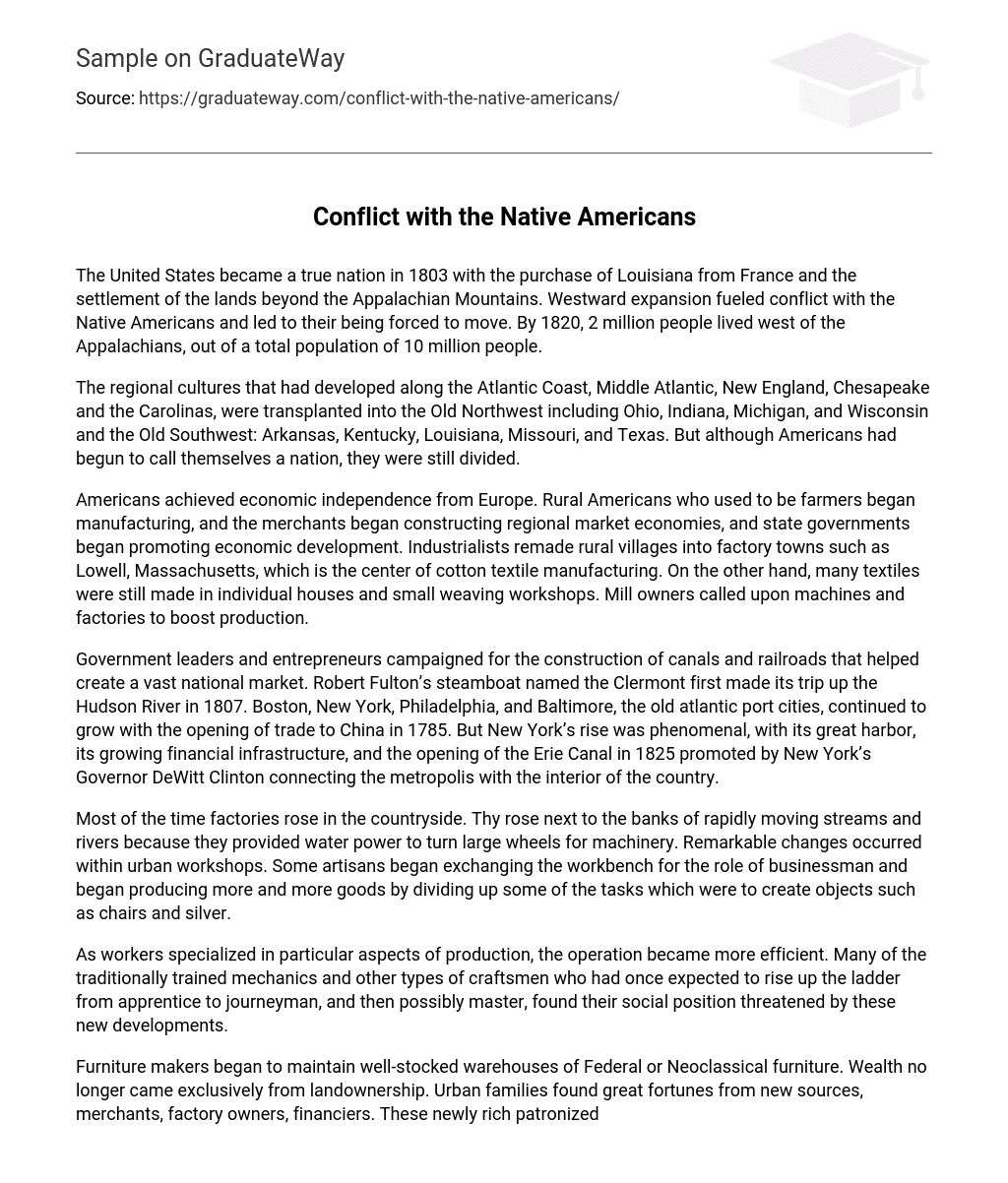The United States became a true nation in 1803 with the purchase of Louisiana from France and the settlement of the lands beyond the Appalachian Mountains. Westward expansion fueled conflict with the Native Americans and led to their being forced to move. By 1820, 2 million people lived west of the Appalachians, out of a total population of 10 million people.
The regional cultures that had developed along the Atlantic Coast, Middle Atlantic, New England, Chesapeake and the Carolinas, were transplanted into the Old Northwest including Ohio, Indiana, Michigan, and Wisconsin and the Old Southwest: Arkansas, Kentucky, Louisiana, Missouri, and Texas. But although Americans had begun to call themselves a nation, they were still divided.
Americans achieved economic independence from Europe. Rural Americans who used to be farmers began manufacturing, and the merchants began constructing regional market economies, and state governments began promoting economic development. Industrialists remade rural villages into factory towns such as Lowell, Massachusetts, which is the center of cotton textile manufacturing. On the other hand, many textiles were still made in individual houses and small weaving workshops. Mill owners called upon machines and factories to boost production.
Government leaders and entrepreneurs campaigned for the construction of canals and railroads that helped create a vast national market. Robert Fulton’s steamboat named the Clermont first made its trip up the Hudson River in 1807. Boston, New York, Philadelphia, and Baltimore, the old atlantic port cities, continued to grow with the opening of trade to China in 1785. But New York’s rise was phenomenal, with its great harbor, its growing financial infrastructure, and the opening of the Erie Canal in 1825 promoted by New York’s Governor DeWitt Clinton connecting the metropolis with the interior of the country.
Most of the time factories rose in the countryside. Thy rose next to the banks of rapidly moving streams and rivers because they provided water power to turn large wheels for machinery. Remarkable changes occurred within urban workshops. Some artisans began exchanging the workbench for the role of businessman and began producing more and more goods by dividing up some of the tasks which were to create objects such as chairs and silver.
As workers specialized in particular aspects of production, the operation became more efficient. Many of the traditionally trained mechanics and other types of craftsmen who had once expected to rise up the ladder from apprentice to journeyman, and then possibly master, found their social position threatened by these new developments.
Furniture makers began to maintain well-stocked warehouses of Federal or Neoclassical furniture. Wealth no longer came exclusively from landownership. Urban families found great fortunes from new sources, merchants, factory owners, financiers. These newly rich patronized the workshops of urban cabinetmakers, silversmiths, and other skilled craftsmen.





